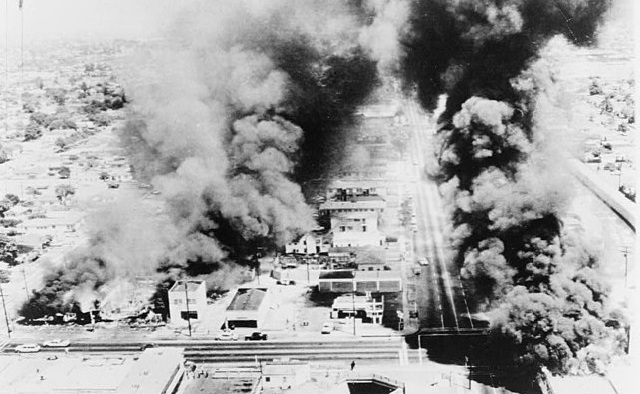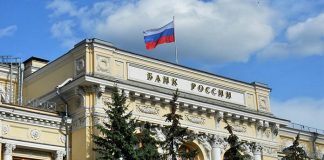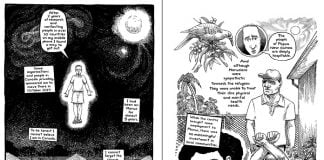Contrary to the popular perception of Los Angeles as a youth paradise, with surfing and an “endless summer” of partying, LA in the 1960s was a hothouse of activism. The book Set the Night on Fire: L.A. in the Sixties by American Marxist Mike Davis and Jon Wiener is its history.
The book was published in 2020 at the height of the pandemic. With the death of Davis in October 2022, aged 76, it’s time to revisit this magisterial history of rebellion which made it to the Top 10 Bestseller List in the LA Times for hardcover non-fiction.
The Black Lives Matter (BLM) movement in the US in May 2020 reminded the world that American capitalism was built on the back of slavery. BLM was built on the struggles that came before it—including the LA Uprising of 1992 and the Watts Rebellion in South Central LA in August 1965.
If British Marxist Chris Harman’s The Fire Last Time: 1968 and After covers many countries in that great era of struggle against capitalism, then one city in the US was a microcosm of it—LA.
The 1960s rebellion there against racism, sexism, homophobia and the Vietnam War, in what was then a city of 2.5 million, spilled over into the early 1970s.
Cold War witch hunt
The Cold War in the 1950s created a climate of anti-communist hysteria in the US. The witch hunt led by the House [of Congress] Un-American Activities Committee (HUAC) created a climate of fear that paralysed the left and cut it off from a wider audience.
The other blow to the US left came with Russian leader Khrushchev’s “Secret Speech” of February 1956, denouncing Stalin’s crimes. As it filtered through to the West many Communist Party (CP) members resigned, although this created space for the emergence of the New Left.
Throughout this period, African-Americans clamoured for their civil rights against a racist power structure.
Davis writes about a campaign in May 1960 on a junior college campus which was multi-racial: “However short lived … it was both a stepping stone to the civil rights battles of 1961-63 and a sign that the anti-communist ice age was beginning to thaw on campuses.”
Another indicator that the thaw had begun occurred in San Francisco, also in May 1960, where students protested for three days against HUAC hearings at City Hall, with the crowd reaching 5000 on the third day. HUAC refused to conduct further public hearings.
Back in LA, in June 1961, ten “teen riots” erupted over six months, three of them involving thousands of youth. As Davis writes: “Spontaneous anti-authoritarianism would define the temper of an entire generation … The subsequent political activism and youth culture of the 60s would be built on this substratum of rebellion against curfews, closed beaches, disciplinary vice principals, draft boards and racist cops.”
Resistance to petty city rules defining acceptable teen behaviour on the beaches and public roads was to merge with opposition to conscription for a dirty war in Vietnam, a country few had heard of.
Triumvirate of capitalist power
Racism was all pervasive in LA, a West Coast city seen as part of the “North” rather than the segregationist South.
Davis writes that in LA: “The legal victories for civil rights won in the late 1940s and early 1950s had yet to yield any edible fruit.” Legal wins under capitalism are only made real with struggle on the ground.
He continues: “L.A. schools … segregated more students than any Southern city, and as far as most residents of South Central L.A. [an African-American area] were concerned, the L.A. Police Department (LAPD) might as well have flown a Confederate battle flag outside its new ‘glass house’.”
LAPD Chief William H. Parker, in office from 1950-66, was an unashamed racist. Sam Yorty, mayor from 1961-1973 and on the right wing of the Democratic Party, was a racist. Cardinal James F McInytre, was a religious bigot, hell-bent on holding back religious reform, women’s rights and abortion. He, too, was a racist.
Some reviewers of the book have cast the police as the chief villain of that era. And indeed Davis is scathing of Parker and the LAPD. He writes: “The Manson gang were bit players compared to the institutions of law and order.” In the early 1960s the LAPD murdered an unarmed Black Muslim and wounded seven others. In 1970 they targeted the Black Panther Party and the Brown Berets, a Latinx group.
But the strength of Davis and Wiener is that they bring all the threads together to see the totality of the system. McIntyre, Parker and Yorty “formed a triumvirate”, according to the authors, that wielded ideological control, physical force and political and economic control. The interplay of the institutions of capitalism made the case for “reforming” them flimsy and the reasons for revolutionary revolt totally explicable.
And so it was that the whole white supremacist world would be blown away in the 1960s by the Watts Rebellion, the rise of the Black Panther Party and the initially, white middle-class protest against the Vietnam War and the Democrat President waging it, Lyndon Johnson.
In June 1967, some 15,000 peaceful anti-war protesters were attacked by a 1000-strong police riot at Century City Hotel, ostensibly “protecting” Johnson as he campaigned for re-election in 1968. LA had given Johnson more votes in 1964 than any other city in the US except New York.
Then after 1968, a movement of common cause emerged between radicalised whites, African-Americans and Latinx people against the Republican President Richard Nixon, who was waging that same war, after having promised to end it, at the cost of cutting social spending.
In August 1970, 30,000 Latinx people in East Los Angeles marched in the “Chicano Moratorium” against the Vietnam War. It, too, was peaceful and brutally attacked by the LAPD.
Socialist organisation needed
Davis, early on, wrote about the need for building a socialist organisation, joining the CP in southern California in solidarity with its stance against the Russian invasion of Czechoslovakia in August 1968.
The CP in LA, according to Davis, was the party’s “most unruly and dissident branch … under the charismatic and eventually heretical leadership of Dorothy Healey”, who was 54 in 1968. She had been trying to reform and democratise the CP since 1956.
The LA branch was “the only interracial organisation with significant young black leaders and influence in the wider Black Power movement”. Healey mentored the talented Angela Davis (no relation to Mike) but felt compelled to leave the Stalinist CP in 1973.
Those young Black leaders and the wider Black Power movement emerged from the Watts Rebellion in 1965. Watts was the home to 80,000 of the poorest people in LA. Despite the post-war boom, the unemployment rate for Black people rose from 12.6 to 19.7 per cent. In Watts, the male unemployment rate stood at 30 per cent.
A black Democrat councillor, Tom Bradley, a former police officer, worried about an imminent explosion in Watts, while Mayor Yorty sat on $22 million in federal grants to alleviate poverty in places like Watts, which would have created thousands of youth jobs.
The Rebellion started on a hot August day over a routine police traffic stop of a Black motorist and went for days. Common cause would be made between African-Americans, whites and the more conservative Latinx community, with racism, the Vietnam War and police harassment binding them together.
In April-May 1970, when President Nixon invaded Cambodia, the student movement erupted. The war had been brought home.
By that year, the US working class, written off by many and shorn of its socialist members by Cold War anti-communist hysteria, began to fight. Teamsters (truck drivers) in LA and Cleveland, Ohio, held unofficial strikes against a pitiful national union contract. Students at the University of California Los Angeles joined the picket lines.
Two weeks after the Teamsters’ strike, thousands of LA teachers “hit the bricks”. The LA Education Department claimed to agree with some of the teachers’ demands but deflected responsibility onto the state government, led by the Republican Governor, Ronald Reagan. Reagan “had been beating up on school kids since 1967”, the year of his election, writes Davis.
High school students came out of school in support of their teachers. Davis notes that the International Socialists, a group started in San Francisco, built a vibrant high school group in LA called Red Tide.
A fighting legacy
While the book is about the 1960s, the struggle against the system continued until 1973. With the US involvement in Vietnam winding down, that year the street protests ended with the electoral defeat of Mayor Yorty and the election of Bradley as only the second Black mayor of a major US city.
Bradley’s election speaks volumes about the elasticity of the capitalist Democratic Party, which could contain both a Yorty and a Bradley. When Yorty’s politics no longer matched the times he was discarded for a Democrat who could incorporate the activists of the movements.
Mike Davis moved to the UK in the 1970s and found his way to orthodox Trotskyism. He was on friendly terms for many years with the International Socialists, the forerunner to today’s Socialist Workers Party, Solidarity’s sister group in Britain.
Davis, diagnosed with cancer, said in a July 2022 interview with the LA Times: “If I have a regret, it’s not dying in battle or at a barricade, as I’ve always romantically imagined—you know, fighting.”
What he has left us with his final book is a legacy of how to fight and the importance of building a multi-racial, socialist organisation that looks to the power of the working class in the workplaces but always with an eye to contested struggle in the streets. This is a guide for the fire next time.
By Tom Orsag
Set the Night on Fire by Mike Davis and Jon Wiener, $24.99, is published by Verso and distributed in Australia by Bloomsbury.






